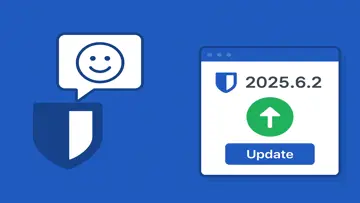UCSF Chimera: Powerful Visualization for Structural Biology
UCSF Chimera is a versatile software tool designed for interactive visualization and analysis of molecular structures, widely used in the field of structural biology.
UCSF Chimera Review
UCSF Chimera is a powerful software application developed by the University of California at San Francisco for interactive visualization and analysis of molecular structures and related data. It is widely used by researchers, scientists, and students in the fields of structural biology, bioinformatics, and chemistry.
Key features of UCSF Chimera include:
- Advanced visualization tools for displaying and manipulating molecular structures in 3D
- Support for a wide range of file formats, including PDB, Mol2, SDF, and more
- Tools for measuring distances, angles, and other properties of molecular structures
- Integration with various computational tools and resources for further analysis
- Customization options for colors, styles, and representation of molecular structures
With UCSF Chimera, users can explore complex biomolecular structures, visualize protein-ligand interactions, and analyze protein dynamics with ease. The software provides a user-friendly interface that allows for efficient navigation and manipulation of large molecular datasets.
In addition to its powerful visualization capabilities, UCSF Chimera also offers features for molecular modeling, sequence analysis, molecular dynamics simulations, and more. It serves as a versatile tool for researchers looking to gain insights into the structure and function of biological macromolecules.
UCSF Chimera is a valuable software application that contributes to the advancement of scientific research in various disciplines. Its intuitive interface, comprehensive tools, and extensive capabilities make it a top choice for professionals seeking to explore and analyze molecular structures with precision and efficiency.
Overview
UCSF Chimera is a Freeware software in the category Graphics Applications developed by University of California at San Francisco.
The latest version of UCSF Chimera is 1.2470, released on 02/18/2008. It was initially added to our database on 12/10/2007.
UCSF Chimera runs on the following operating systems: Windows.
UCSF Chimera has not been rated by our users yet.
Pros
- Free to download and use for academic purposes
- Supports a wide range of molecular visualizations
- Intuitive user interface with customizable features
- Robust support for various file formats (PDB, DX, etc.)
- Strong community support and extensive documentation available
- Powerful tools for molecular modeling and analysis
- Integration with computational chemistry software and tools
Cons
- Limited features in the free version compared to some commercial software
- Performance can be slower with large datasets or complex models
- May have a steep learning curve for beginners without prior experience in molecular modeling
- User interface may appear outdated compared to modern applications
- Occasional compatibility issues with updated operating systems or hardware
FAQ
What is UCSF Chimera?
UCSF Chimera is a program for interactive visualization and analysis of molecular structures and related data. It was developed by the Resource for Biocomputing, Visualization, and Informatics at the University of California, San Francisco.
What kind of data can be analyzed with UCSF Chimera?
UCSF Chimera is able to analyze many types of molecular structures, including proteins, nucleic acids, carbohydrates, lipids, and small molecules. It can also display electron density maps and molecular surfaces.
Is UCSF Chimera free?
Yes, UCSF Chimera is free and available for download on the official website.
What operating systems are compatible with UCSF Chimera?
UCSF Chimera is compatible with Windows, Mac OS X, and Linux operating systems.
Can multiple users work together on one UCSF Chimera project?
Yes, multiple users can collaborate on a single project in real-time using ChimeraX, a next-generation version of UCSF Chimera developed by the same team.
Is there documentation available for using UCSF Chimera?
Yes, there is extensive documentation available on the official website, including tutorials, user guides and frequently asked questions. There is also a user forum where you can ask questions and get support.
What is the difference between UCSF Chimera and ChimeraX?
ChimeraX is a next-generation version of UCSF Chimera with improved processing power, enhanced user interface, and additional features. ChimeraX also supports virtual reality headsets and remote data visualization over the internet.
Can UCSF Chimera be integrated with other molecular modeling software?
Yes, UCSF Chimera supports input from many other molecular modeling software programs, such as CHARMM, AMBER, and Autodock.
Can UCSF Chimera be used for educational purposes?
Yes, UCSF Chimera is a valuable tool for teaching molecular biology and biochemistry. The program is widely used in university courses around the world.
Is UCSF Chimera suitable for commercial use?
Yes, UCSF Chimera can be used for commercial purposes. However, it is recommended to contact the developers for a licensing agreement if you plan to use it for commercial applications.

Pete Milner
I'm Pete, a software reviewer at UpdateStar with a passion for the ever-evolving world of technology. My background in engineering gives me a unique insight into the intricacies of software, allowing me to provide in-depth, knowledgeable reviews and analyses. Whether it's the newest software releases, tech innovations, or the latest trends, I'm here to break it all down for you. I work from UpdateStar’s Berlin main office.
Latest Reviews by Pete Milner
- Helper-Saturator: A Promising Tool for Saturation Enhancement
- Synaptics WBF Fingerprint Reader Drivers Offer Enhanced Security Features
- Comprehensive Chess Learning and Playing Platform with Robert Ris’s Vienna Game Module
- Hone by AuraSide Inc: An Insightful Review
- Win USB Display by MS: An Efficient Portable Screen Solution
Latest Reviews
|
|
Intel(R) Dynamic Tuning Technology
Intel's Dynamic Tuning Technology Optimizes Performance and Efficiency |
|
Native Instruments Una Corda
Native Instruments Una Corda: A Unique Sample Library for Soft Piano Tones |
|
|
Hybrid Mark Knight Expansion
Hybrid Mark Knight Expansion by AIR Music Tech GmbH Review |
|
|
Helper-Equalizer
Helper-Equalizer: Versatile Audio Tool for Custom Sound Tuning |
|
|
Helper-Saturator
Helper-Saturator: A Promising Tool for Saturation Enhancement |
|
|
Ravage Lite
Ravage Lite: A Lightweight Audio Enhancement App |
|
|
UpdateStar Premium Edition
Keeping Your Software Updated Has Never Been Easier with UpdateStar Premium Edition! |
|
|
Microsoft Edge
A New Standard in Web Browsing |
|
|
Google Chrome
Fast and Versatile Web Browser |
|
|
Microsoft Visual C++ 2015 Redistributable Package
Boost your system performance with Microsoft Visual C++ 2015 Redistributable Package! |
|
|
Microsoft Visual C++ 2010 Redistributable
Essential Component for Running Visual C++ Applications |
|
|
Microsoft OneDrive
Streamline Your File Management with Microsoft OneDrive |





